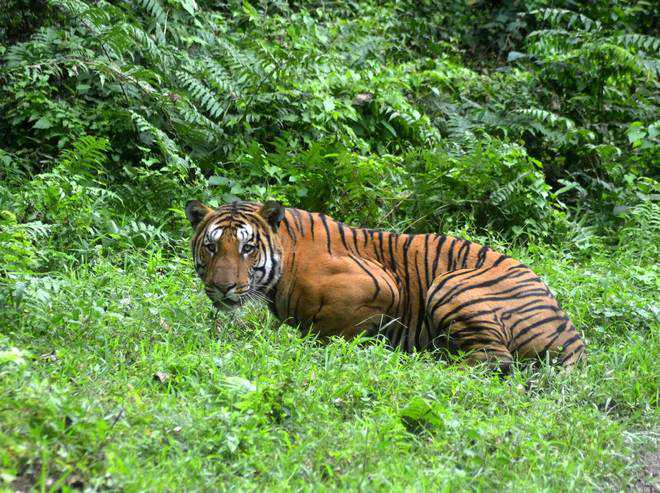Jotirmay Thapliyal
Tribune News Service
Dehradun, August 3
A first in the country, the World Wide Fund for Nature-India (WWF-India) in association with the state forest authorities have taken up an initiative to develop fodder plots in Corbett landscape to minimise cattle losses in tiger attack incidents.
Every year, nearly 800 cattle are killed by tigers in the Corbett landscape. Like other parts of Uttarakhand, tiger-famous Corbett landscape also faces the challenge of human-animal conflict.
Killing of livestock by tigers are also one of the prominent reasons that fuel the human-animal conflict in the region, triggering retaliatory killing of tigers at times.
The WWF-India Uttarakhand has been running the Interim Relief Scheme in the Corbett landscape for the past 15 years that entails providing immediate some relief money to the owner of the cattle killed by tigers in the Corbett landscape.
This fund is apart from the compensation provided by the state Forest Department.
Now, the organisation in a new initiative has decided to come up with fodder plots. It involves growing of fodder in degraded community land areas. Thus villagers will not be required to take their cattle to forests for grazing.
Paatkot village area, encompassing about 10 hectares, in the Ramnagar forest division of the Corbett region has been identified as the first fodder plot under the project where indigenous fodder species will be grown. As many as 15 high conflict villages in Corbett landscape have been identified where fodder plots projects will be taken up after the success of Paatkot project.
Senior WWF-India official Dr AK Singh said the creation of the fodder plots would be of immense benefit in minimising cattle losses in the region. He said, “Villages like Paatkot, Amoth and Nathujhala are already high conflict villages where killing of livestock by tigers are common.”
Unlock Exclusive Insights with The Tribune Premium
Take your experience further with Premium access.
Thought-provoking Opinions, Expert Analysis, In-depth Insights and other Member Only Benefits
Already a Member? Sign In Now










